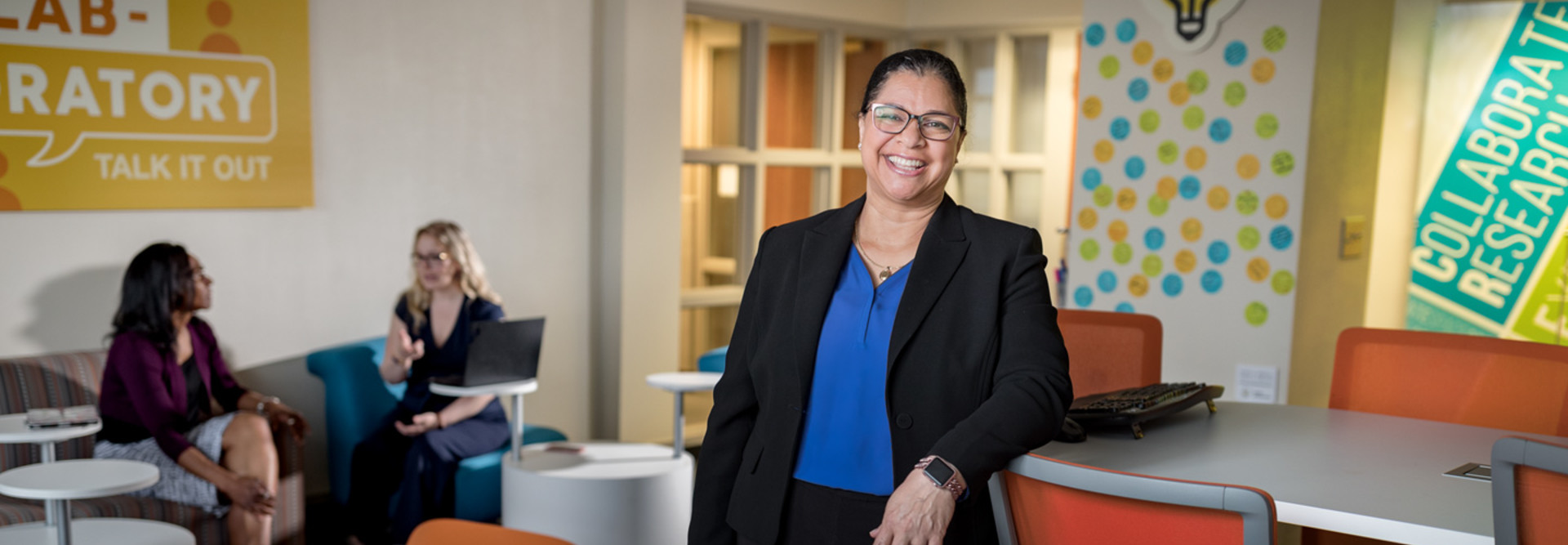Officials in Wake County, N.C., were inspired to bring employees from across local government agencies together in a neutral space to look at innovative ways to fulfill government responsibilities.
In 2017, the county launched the CREATEspace innovation lab, which is open to every one of its 4,800 employees. The lab sits on the 12th floor of the Waverly F. Akins Building. It features three separate spaces — the Collaboratory, DiscoTech and Thinkubator — and a team of four dedicated employees.
Nearly 200 people have come through and used CREATEspace since it opened. Wake County established it to provide “physical and mental separation from near-term issues and work” and thereby encourage fresh perspectives.
“The innovation lab is for all things new: ideas, exploration, experimentation. We have two innovation partners — which is a new job title here — and a data scientist on our team. What we do is we help people take their ideas to the next level,” says Paula Richardson, Wake County's assistant IT director.
Innovation labs are popping up for several reasons. Many cities and counties view digital innovation as a key element in their economic development — particularly as older industries have disappeared and cities rethink their economies and future job opportunities. Innovation labs provide a means for government employees to apply new technologies to long-standing challenges. Innovation labs also help attract and retain workers excited about uncovering new ways to provide traditional citizen services.
“Innovation labs can help support new startups and draw inward investment from larger companies as well as federal and national government grants in some cases,” says Eric Woods, research director with Navigant Research. “Cities also see it as a good way to help retain talent since many ‘second-tier’ cities see their graduates gravitate to big cities and tech centers such as Silicon Valley or the East Coast — or, in Europe, London, Paris or Berlin — and are keen to attract more of them to stay.”

Wake County Finds Creative Solutions to Big Civic Problems
Since its inception in July 2017, CREATEspace has served as an incubator for larger, countywide programs, such as Wake County’s partnership with North Carolina State University’s Center for Geospatial Analytics called Geo-IDEAS (or Geo-Innovation, Developing Analytics Solutions for Wake County), and smaller programs by one internal department, such as a Microsoft Power BI dashboard created and managed by the Wake County Register of Deeds.
The Geo-IDEAS project helped the county identify where its green spaces were shrinking so it could look for ways to protect and expand these areas. “This helped us to use data to tell a story to create plans around our current open spaces and understand how data can help you answer questions and provide insights to make changes,” Richardson says.
The Register of Deeds allows attorneys to submit documents electronically. The office offers a data dashboard for attorneys to monitor the error rates of their submissions over time and improve their acceptance rates, she says.
Both of these examples provide new solutions to old problems, and they support new ways to do business in the county. Employees are excited to come to work and have skin in the game, says Richardson. “We hold sessions in our area where county employees will take one of their business processes and dissect it and figure out how we can do this work differently,” she says.
Last year, the county held 11 process discussions, forging relationships between disparate groups, employees, departments and public and private sector vendors.
MORE FROM STATETECH: Discover how AI technologies can improve state and local government services.
Colorado Embraces Private Sector Engagement
The Colorado Smart Cities Alliance plays a similar role in its state, acting as a liaison and innovation lab for the state’s four federally funded research labs, 20 Colorado cities, three universities and its nine private sector vendors, explains Jake Rishavy, the organization’s co-founder.
“We really see the alliance as being a network of city test beds for the codevelopment of new and emerging solutions for these challenging problems that are facing us,” Rishavy says. The alliance is a connector between the stakeholders.
At the beginning of an innovation cycle, public sector members get together for research and discussions, uncovering specific problems requiring solutions. Ideas for all 20 cities are added to a master list. Then, everyone in the alliance comes together and prioritizes the ideas.
The top options are then promoted to the private sector vendors, including Arrow, Hitachi, Verizon and others.
“When we find a match, we’ll pull the entities together and initiate a project,” Rishavy says. One of the alliance’s most recent projects was a three-city collaboration on traffic signals. From a practical perspective, the project was designed to improve the flow of traffic between the cities even though they have different signal technology and networks. If a car accident affects one city, traffic signals can detour drivers from other cities around the problem.
“It improved the capacity and throughput of existing hard transportation infrastructure by utilizing adaptive signals,” Rishavy says.
MORE FROM STATETECH: Find out how different states are going on a smart state journey.
Montgomery, Ala., Drives Innovation with Community Participation
Innovation can also happen when cities and counties bring constituents and business owners into the innovation lab process. Montgomery, Ala., recently brought its community into one of its projects focused on public safety. The city designated a two-block stretch as a living lab, where it can test technologies and new projects, and it’s going outside of those parameters to improve security for all residents and businesses.
Montgomery is installing webcams on top of smart poles as part of what it calls its STAR Watch crime-fighting program. But those installations can’t possibly cover the entire city, says Chris Conway, Montgomery’s director of public works.
“Any camera that is web-based can be used by our law enforcement, so we asked local businesses and residents to get involved, signing up to connect their cameras to our back end,” Conway says of STAR Watch.
Within a few weeks, the program signed up more than 1,500 organizations, including local school districts. In January, the program was put to the test when Montgomery law enforcement got a report of someone discharging a weapon inside of a high school. The program includes cameras from Arlo, Honeywell and other established manufacturers.
“Because the school’s cameras are part of the STAR Watch program, we were able to get eyes inside of the school very fast. We knew more about how to handle what was going on rather than just showing up on the scene,” Conway says. “We were able to very safely take control of the situation and defuse it.”
Wake County’s Richardson says she hopes her county’s CREATEspace attracts similar projects that will improve quality of life and safety. The possibilities resulting from so many different departments and entities involved makes innovation labs very appealing.
“We want to be able to offer — to our emergency medical services, to our fire services, to our sheriff — a place where they can come and see new offerings and cutting-edge technology from vendors, so that they can make decisions about what they want to explore or different tools that they want to use,” Richardson says. “It’s giving us opportunities that were never there before.”











